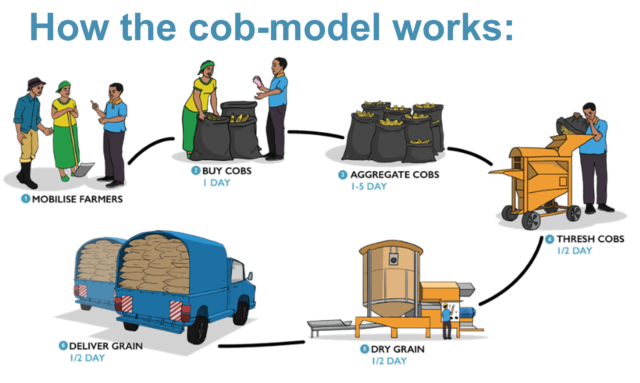Gender Action Learning System Approach Builds Stable Homes in Farming Communities
The Feed the Future Rwanda Hinga Weze activity uses the Gender Action Learning System to support couples to improve their relationships and livelihoods.
Although Rwanda has made tremendous progress in gender equality, low male engagement in domestic chores remains a challenge in many areas. Most affected by this phenomenon are rural communities across the country, including in Nyagisozi cell, Kageyo sector, in Gatsibo district where Illumine Gakuru resides.
Gakuru had been married to Donatien Munyandinda for the last five years, but without her husband’s support, Gakuru struggled to raise their two children and take care of their home garden and household.
Gakuru was not alone. She shared similar difficulties with other women in nearby farming communities, who also faced traditional gender dynamics that limited their equal access to incomes and other productive economic resources.
In 2018, Gakuru and her husband enrolled in a gender empowerment program managed by the Feed the Future Rwanda Hinga Weze activity, an activity funded by USAID and implemented by Cultivating New Frontiers in Agriculture (CNFA). Hinga Weze works in Gatsibo and nine other districts across Rwanda to sustainably increase farmers’ incomes, improve the nutritional status of women and children and increase the resilience of agriculture to the changing climate.
The new program, known as the Gender Action Learning System (GALS), uses a community-led gender empowerment methodology to addresses gender dynamics and ensure equitable decision-making within the household. GALS also enables couples to take action together and share control over household assets, reshaping income dynamics.
Gakuru and Munyandinda are among the 5,955 couples empowered through GALS to understand and prepare detailed household development plans and achieve a shared vision. As one of the first to attend the GALS program, Gakuru and Munyandinda were introduced to concepts such as participatory visioning and planning to help identify and resolve the issues that were holding them back from developing as a couple. With this approach, they were able to work through issues negatively affecting their communication and their ability to jointly manage household finances.
“Unlike before, we now have a joint bank account,” says Munyandinda. The couple also shares child rearing and household chores and jointly manages their finances and goals. “I always had misunderstandings with my husband because he would sell all our produce and use all the money without consulting me. But now, we have learned a lot from this new approach and we have a happy home,” observed Gakuru with visible excitement.
Munyandinda has also become a male champion in his community of Kageyo. As a male champion, Munyandinda mobilizes other farmers to engage their spouses and take part in household chores and child-rearing activities.
By empowering 1,863 community-based volunteers, Hinga Weze trained 5,955 couples to develop household activity plans and created 83 male champion networks in ten districts of its operations in Rwanda, reaching 185,126 women. Through GALS, Hinga Weze is enabling more men to view their spouses as partners, not adversaries, with equitable decision-making power.






Recent Comments